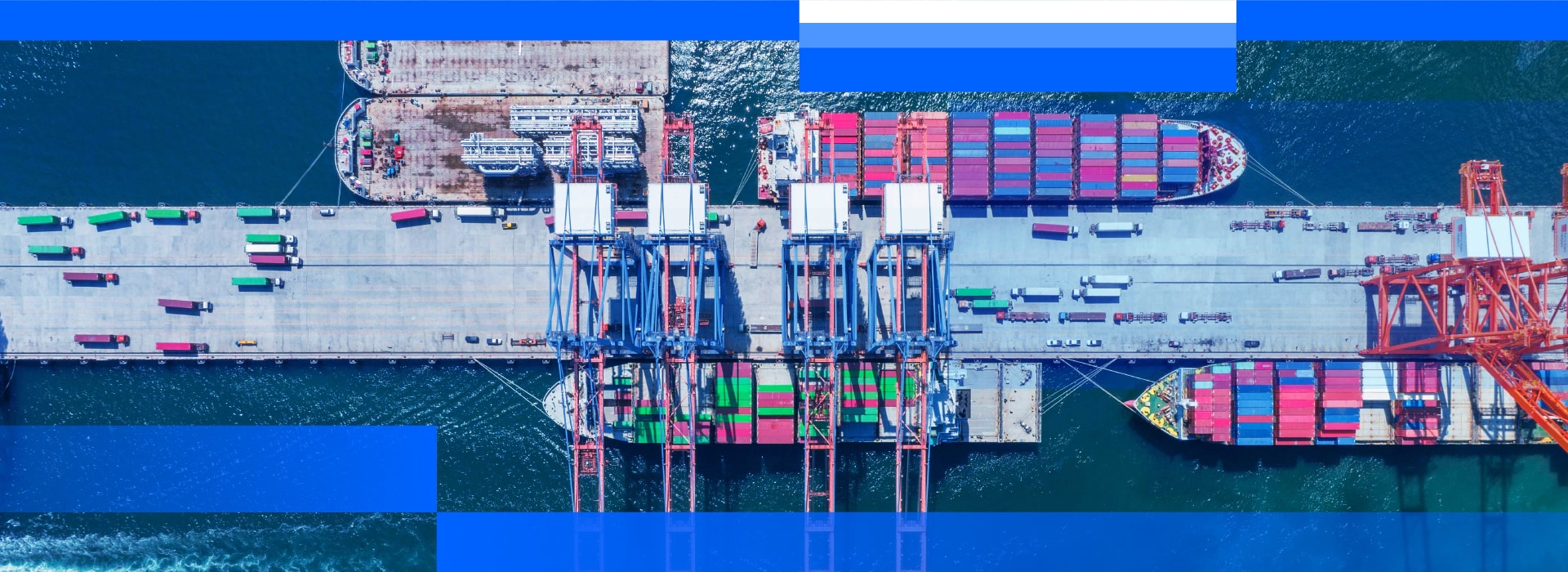Home > TradeEdge > Blogs > Transforming into a connected global supply chain to unlock unlimited possibilities
Transforming into a connected global supply chain to unlock unlimited possibilities

The COVID-19 pandemic has unleashed catastrophe and disrupted businesses across sectors to such an extent that the traditional supply chain, unable to bear the shockwaves, has come to a crossroads. Thus, the conventional approach within the global supply chain is gradually becoming a strategy of the past. However, the primary reasons for the conventional model waning away are its linear progression approach and the consequent disjointed supply chain networks.
Adding to the woes, companies rely more on the ‘plan and react’ tactic followed by the traditional supply chain. As a result of this antiquated model, companies are finding it tough to apply plans to resolve the global supply chain crisis. This is where a connected global supply chain enters the scene as the need of the hour to bridge the gap between the patchy networks.
Why disconnected systems block the path to a resilient supply chain?
Supply chains currently depend on various kinds of disconnected technologies that lead to a lack of visibility and valuable data in the supply chain operations. Moreover, the involved parties often rely on legacy ERP solutions that are generally very slow and expensive.
In such situations, these structures get optimized for efficiency rather than agility; hence, they do not meet either target. Also, to fight the recent disruptions, many businesses have been compelled to make decisions that have dented their profits as they were not ready with substitute suppliers and agile systems.
Connected global supply chain – the next best solution for enhanced visibility
Transforming the supply chain is daunting as one cannot just replace the existing technology investments. However, the companies do not require to start from the grassroots level and can improve the fundamental technologies they already have. The first and foremost thing to do is to begin mapping and identifying the business processes to improve visibility to optimize the processes.
Hence, for the global supply chain to become intelligent and automated, it must first be documented in a process prototype that will guide the makeover attempts by underlining the processes that need to be automated. After that, these process models can be utilized to simulate various settings to build up an automatic process application. This agile application can then deliver performance data suggesting the location of bottlenecks, thus enabling the parties to transform the operation.
How to build a connected network of global supply chains?
Despite being aware of the benefits of an integrated supply chain, the transformation toward supply chain visibility is sluggish, with many companies commencing the same, only recently with pilot projects.
There are two things to consider when planning a connected supply chain. The first one is to guarantee that the firm leverages digital technologies that can connect the organization with partners and consumers. The second one is to realize that the supply chain will not be able to reach deep connectivity in a single step. Therefore, it is safer and better to take up the phased approach.
Key advantages of a connected global supply chain
The connected supply chain has become a primary strategic driver and domain of competitive differentiation for business processes. However, supply chain data siloes and bottlenecks can only be nullified if all parts of the integrated machine work in coherence.
A company looks to attain three goals through the connected supply chain, which are:
Demand-led supply chain: A connected supply chain provides data for real-time operations and delivers the required insights to entirely identify what the customers want. Subsequently, companies can move from a supply-focused to a demand-driven business. Hence, the firms can find out demand spikes and utilize the trends to predict the inventory they require at every stage.
Visibility of supply chain: Every part of the global supply chain can be traced and scrutinized by linking all the partners and facilitating the protected and efficient flow of information. Therefore, with visibility and clarity of issues, it becomes simpler to boost efficiency and respond quickly to supply chain shock waves, thereby improving customer experience.
Supply chain optimization: Once the visibility increases, the companies can receive the supply chain data that enables a process of continuous improvement and optimization. The manufacturers can raise business agility, boost efficiency, and decrease costs. The connected supply chain facilitates more effective supplier performance management by mitigating risks through improved operability at all stages, including sustainability and ethical performance metrics.
What does a connected global supply chain mean for businesses?
It primarily connects everyone engaged in a supply chain, pulling together the partner networks and dissimilar systems to ensure that information can make an end-to-end and seamless flow across the supply chain. The core objective is to combat the global supply chain disruptions and enhance visibility, that too in real-time. This enables the involved parties to establish a unified system across the company between individual networks such as manufacturers, suppliers, logistics partners, dealers, and consumers.
A connected supply chain, a journey towards digital transformation, is one efficiently defined system as the involved networks can effectively communicate with each other by sharing critical insights. This responsiveness enables organizations to forecast and respond to market volatility via augmented visibility.
Connected supply chain – The final frontier
Major disruptions like the COVID-19 pandemic, market volatilities, and other insecurities have compelled companies to lift and shift their supply chains quickly. Organizations have realized that a traditional or linear approach to a supply chain operation will no longer work, especially with the tattered functioning of the logistical processes. Hence, the key to a success story lies in the renovation to a more connected and self-orchestrating supply chain landscape where firms can quickly foresee opportunities and deal with the challenges and risks of global supply chain management before they pile up.


Possibilities Unlimited
Possibilities Unlimited
Inspiring enterprises with the power of digital platforms
More blogs from EdgeVerve →